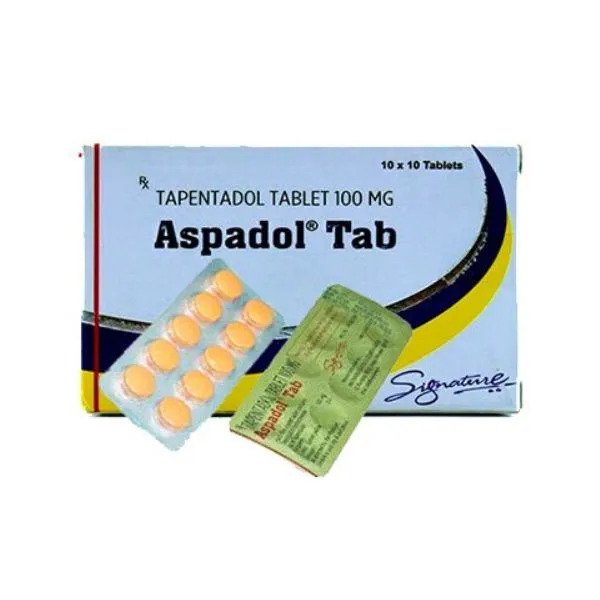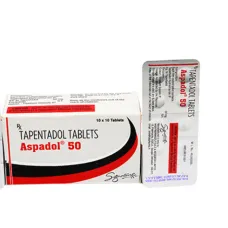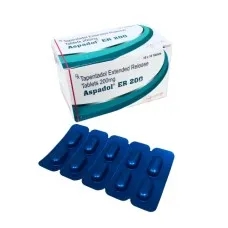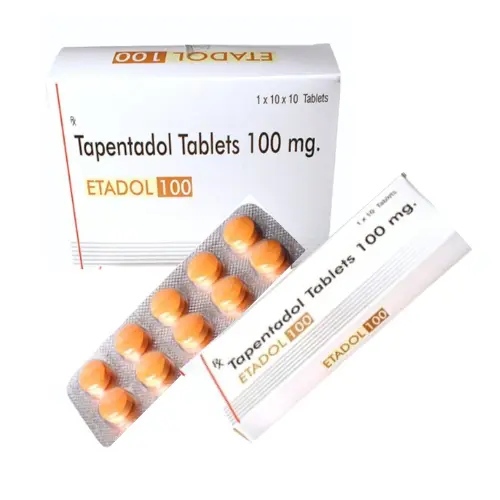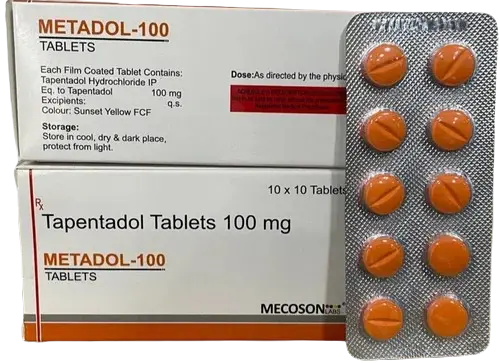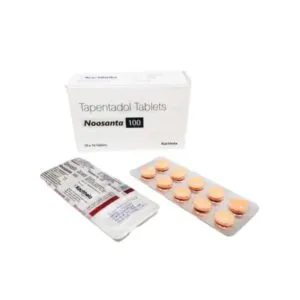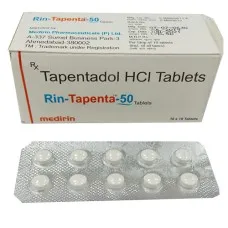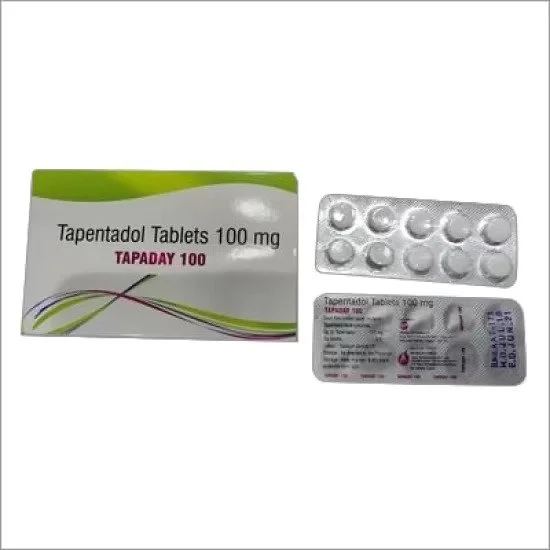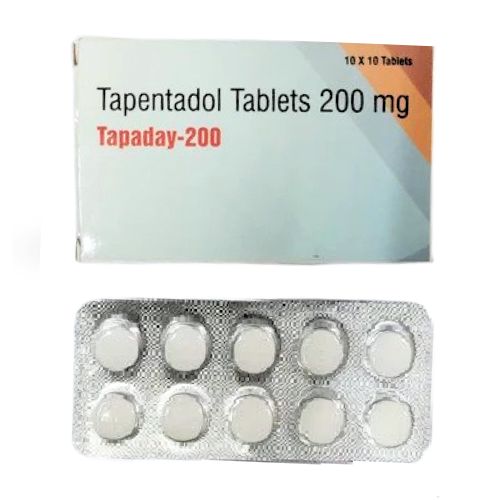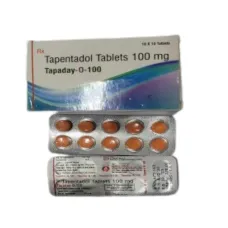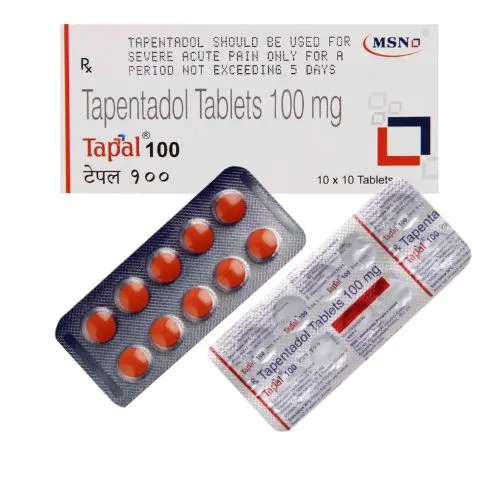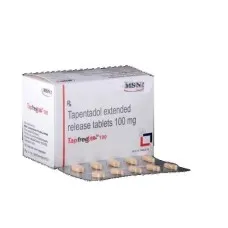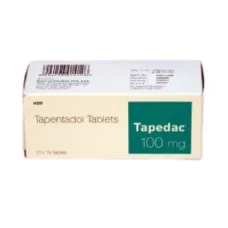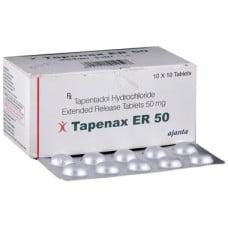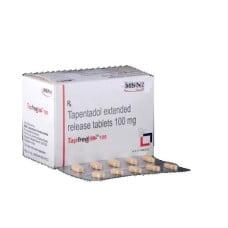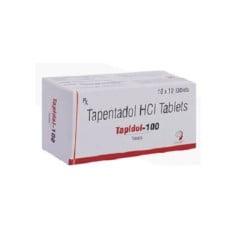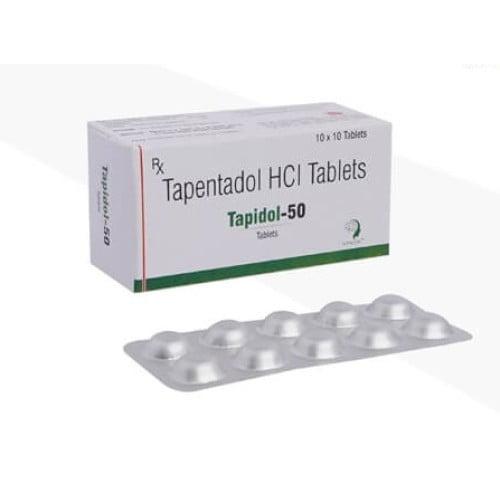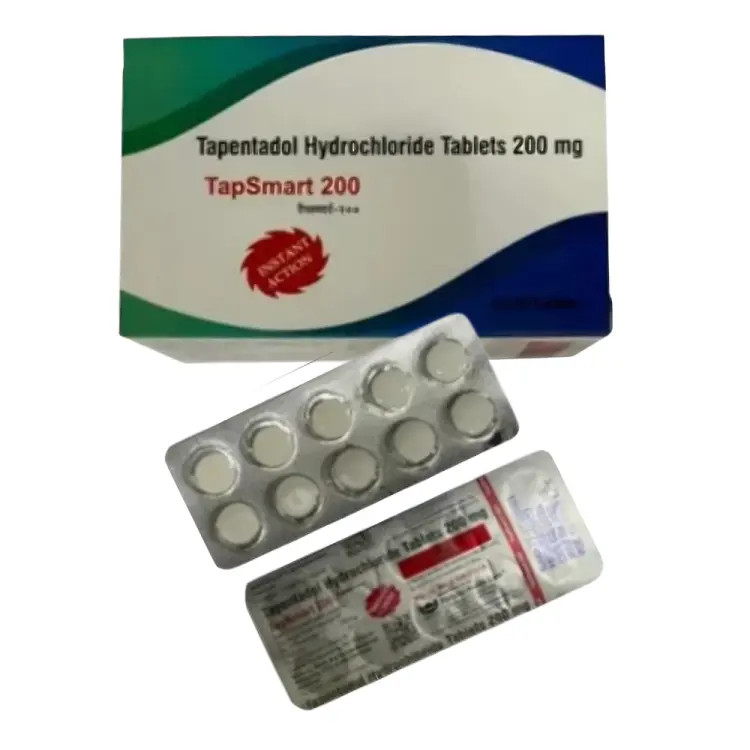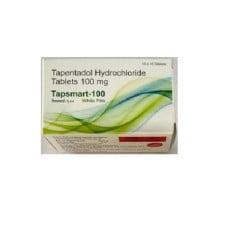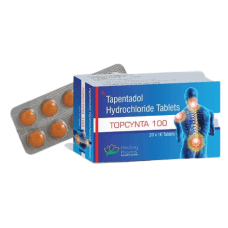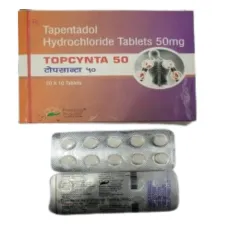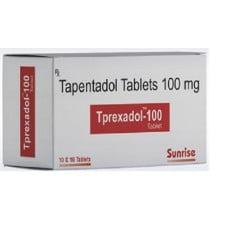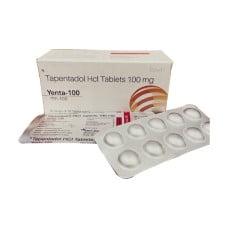Tapentadol tablet is a centrally-acting pain reliever that belongs to a class of drugs known as opioid analgesics. it is also Tapentadol Brand Name It works by binding to specific receptors in the brain and spinal cord, reducing the perception of pain in the body.
Buy tapentadol online for use to treat moderate to severe pain, such as that caused by surgery, chronic conditions, and injuries. It is available in both immediate-release (IR) and extended-release (ER) forms and is usually taken orally.
What is Tapentadol?
Tapentadol is a centrally-acting opioid pain medication that is used to treat moderate to severe pain.
It works by binding to specific receptors in the brain and spinal cord, which reduces the perception of pain and increases the release of certain neurotransmitters that can also help to reduce pain.
It can cause side effects such as dizziness, nausea, and drowsiness, and should only be used under the guidance of a healthcare provider.
How it is different from other opioid pain medications
Tapentadol high is typically used for patients who have a high tolerance to other opioids or for those who are experiencing severe pain that cannot be controlled by other medications.
Fentanyl is also available in a variety of forms including a patch, lollipop, and lozenge.
Other opioid pain medications such as oxycodone and morphine are Schedule II and III controlled substances, which means they have a lower potential for abuse and dependence.
How Tapentadol works in the body
Tapentadol is a synthetic opioid analgesic that works by binding to the mu-opioid receptors in the brain and spinal cord.
These receptors are responsible for controlling pain, pleasure, and emotions. When tapentadol binds to these receptors,
it reduces the perception of pain by inhibiting the release of certain neurotransmitters, such as glutamate and substance P.
In addition to its opioid effects, tapentadol also works by inhibiting the reuptake of norepinephrine, a neurotransmitter involved in the body’s response to stress and pain.
This dual mechanism of action makes tapentadol more effective at treating chronic pain than traditional opioids that only target the mu-opioid receptors.
It also works by blocking pain signals and preventing them from reaching the brain. It also increases the release of certain neurotransmitters that help to reduce pain and improve mood.
Potential benefits of taking this medicine
Pain relief:
tapentadol hydrochloride is an opioid agonist and works by binding to specific receptors in the brain and spinal cord to reduce pain perception. It is particularly effective for treating moderate to severe pain.
Improved quality of life:
By reducing pain, tapentadol can improve a patient’s ability to perform daily activities, leading to an overall improvement in quality of life.
Reduced need for other pain medications:
Tapentadol can be used as a standalone medication or in combination with other pain medications,
potentially reducing the need for higher doses of other opioids or non-opioid pain relievers.
Low risk of addiction:
Tapentadol has a lower risk of addiction compared to other opioids, making it a suitable option for long-term pain management.
Low risk of overdose:
Tapentadol’s mechanism of action reduces the risk of overdose, making it a safer option for pain management compared to other opioids.
Suitable for elderly patients:
Tapentadol has been shown to be safe and effective for use in elderly patients, who may be at a higher risk of adverse effects with other opioids.
Effects on the central nervous system
tapentadol pill is a centrally-acting opioid analgesic that works by binding to mu-opioid receptors in the brain and spinal cord.
It also has a weak noradrenergic reuptake inhibition effect, which is thought to contribute to its pain-relieving properties.
When taken as directed, tapentadol can reduce the perception of pain, increase feelings of euphoria and relaxation, and reduce anxiety. It can also cause drowsiness, sedation, and a decrease in cognitive function.
Recommended dosage
The recommended tapentadol dosage varies depending on the indication for use and the individual patient’s medical history.
It is important to follow the dosage instructions provided by your healthcare provider and to not exceed the recommended dosage.
For moderate to severe pain, the recommended starting dose is 50-100 mg orally every 4-6 hours as needed. The maximum daily dose should not exceed 600 mg per day.
For chronic pain, the recommended starting dose is 50 mg orally twice daily, with an increase to 100 mg twice daily as needed. The maximum daily dose should not exceed 600 mg per day.
It is important to note that tapentadol should not be used in patients under the age of 18 and should be used with caution in older adults or those with liver or kidney impairment.
It is also important to inform your healthcare provider of any other medications you are taking, as tapentadol can interact with certain medications.
Potential side effects of this tablet
- Dizziness or drowsiness
- Nausea or vomiting
- Headache
- Constipation
- Dry mouth
- Sweating
- Blurred vision
- Insomnia or difficulty sleeping
- Loss of appetite
- Rashes or itching.
It is important to note that these side effects may vary from person to person and may also depend on the dosage and duration of use.
Tapentadol: Precautions
- Tapentadol may cause drowsiness, dizziness, or blurred vision. Avoid operating heavy machinery or driving while taking this medication.
- Do not drink alcohol while taking tapentadol as it may increase the risk of drowsiness, dizziness, and other side effects.
- Tapentadol may interact with other medications, including antidepressants, antihistamines, and opioids. Tell your doctor about all medications you are taking before starting tapentadol.
- Tapentadol may be habit-forming and should be used only by the person for whom it was prescribed. Keep the medication in a secure place and do not share it with others.
- If you have a history of breathing problems, such as asthma, COPD, or sleep apnea, tell your doctor before taking tapentadol.
- Tapentadol can cause serious allergic reactions, including hives, swelling of the face, lips, tongue, or throat, and difficulty breathing. Seek medical attention immediately if you experience any of these symptoms.
Interactions with other medications
tapentadol interactions may interact with other medications, including:
Opioid pain medications:
Taking tapentadol with other opioid medications can increase the risk of overdose and potentially fatal breathing problems.
Sedatives:
Taking tapentadol with sedative medications such as benzodiazepines or sleeping pills can increase the risk of sedation and difficulty breathing.
Antidepressants:
Taking tapentadol with antidepressants such as tricyclic antidepressants or selective serotonin reuptake inhibitors (SSRIs) may increase the risk of serotonin syndrome, a potentially life-threatening condition characterized by high levels of serotonin in the body.
Blood thinners:
Taking tapentadol with blood-thinning medications such as warfarin may increase the risk of bleeding.
MAO inhibitors:
Taking tapentadol with monoamine oxidase inhibitors (MAOIs) may increase the risk of serotonin syndrome.
It is important to inform your healthcare provider about all medications, supplements, and herbs you are taking before starting tapentadol.
Your healthcare provider may need to adjust your dosage or change your medications to prevent interactions.
Tapentadol: Storage Guidline
Tapentadol should be stored at room temperature, away from light and moisture. Keep the medication in its original container and out of reach of children and pets.
Do not store the medication in the bathroom or near a sink. Do not freeze or refrigerate the medication.
If the medication has expired or is no longer needed, dispose of it properly according to the instructions provided by your pharmacist or healthcare provider.
In the Case of Missed dosage
If you miss a dose of tapentadol, take it as soon as you remember. However, if it is close to the time for your next scheduled dose, skip the missed dose and continue with your regular dosing schedule.
Do not take extra medicine to make up for the missed dose. If you miss multiple doses or have difficulty remembering to take your medication, it is important to speak with your healthcare provider for guidance.
FAQs
How is tapentadol taken?
Tapentadol is typically taken orally in tablet or capsule form. It may be taken with or without food. It is important to follow the dosing instructions provided by your healthcare provider.
How long does tapentadol take to work?
The onset of pain relief from tapentadol typically occurs within 30 minutes to 1 hour after taking the medication.
Are there any tapentadol side effects?
Common side effects of tapentadol include nausea, dizziness, drowsiness, and constipation. More serious side effects can include respiratory depression, addiction, and overdose.
Who should not take tapentadol?
Tapentadol should not be taken by individuals who have a history of opioid addiction or are currently taking other opioid medications. It should also not be taken by individuals who have a history of breathing problems or lung disease.
Can tapentadol be abused?
Yes, tapentadol is a controlled substance and can be abused. It is important to take it only as directed by a healthcare provider and to not share it with others.
Where can I buy tapentadol online?
You can buy tapentadol online from buynetmeds.com pharmacy at an best tapentadol cost.
Can tapentadol be taken with other medications?
It is important to inform your healthcare provider of all medications, vitamins, and supplements you are currently taking before starting tapentadol.
Some medications may interact with tapentadol and cause harmful effects. It is also important to avoid alcohol while taking tapentadol as it can increase the risk of side effects.
What should I do if I overdose on tapentadol?
If you suspect an overdose, seek emergency medical attention immediately. Symptoms of an overdose may include slow breathing, seizures, and loss of consciousness.
Can tapentadol be used for long-term pain management?
Tapentadol can be used for long-term pain management, but it is important to have regular follow-up appointments with your doctor to monitor for any potential side effects or complications.
If a patient is taking tapentadol for a long period of time and they stop it, they may have withdrawal symptoms.
Showing all 30 results


